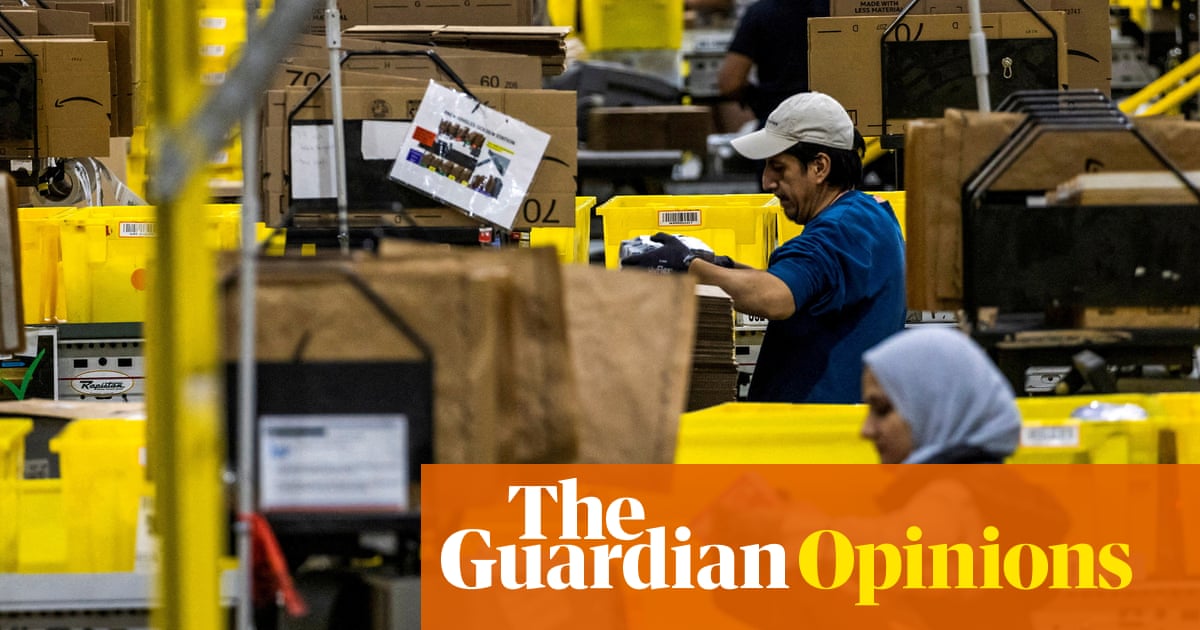Stefano La Rovere, director of global robotics, mechatronics and sustainable packaging atAmazon, has the unfortunate task of trying to convince the public that Amazon is not in fact automating away human labor with its robotics deployments.
“It is a myth that technology and robots take out jobs,” La Roveretold CNBClast year. He said robots assisted workers “by reducing walking distance between assignments, by taking away repetitive motions, or by helping them to lift heavy weights. In turn, our employees can learn new skills.”
La Rovere added that in recent years, “more than 700 new categories of jobs have been created by the use of technology”.
Still, Amazon has also bragged that warehouse automationhas reduced costs by 25%, and one has to exercise willful disbelief to conclude that those savings are not in labor costs.
But Amazon employs so many people that it can be difficult to get a sense of just what automation means for its human workforce. The company’s official total employee count has dipped froma 2021 high of 1.61 million workersto1.56 million in 2024, but this could be attributed simply to a leveling off of e-commerce demand after the Covid-19 pandemic surge.
To get a better sense of how automation is affecting the Amazon workforce, we need to differentiate by facility type: Amazon fulfillment centers, where orders are picked and packaged, are the key targets of automation deployments. The Kiva robots that move stacks of goods around warehouse floors, and the robotic arms that allow for automated picking and stowing of goods, are primarily used in fulfillment centers. By contrast, Amazon delivery stations, where packages are loaded on to trucks bound for your doorstep, are not subject to the same robotics wizardry and do not look significantly different from UPS or FedEx facilities.
From 2022 to 2024, the total package delivery count of Amazon Logistics, the company’s delivery service, jumped from 5.1bn to 6.1bn,according to Pitney Bowes, an increase of roughly 20%. In that same period, according to the Occupational Safety and Health Administration’s (Osha)injury tracking application data, the average number of employees at Amazon delivery stations went from 208 to 250, also an increase of roughly 20%. This coincidence is not accidental: if you want to deliver 20% more packages, you need 20% more workers to get them on to trucks.
The story is quite different for fulfillment centers. In 2022, the average number of employees at an Amazon Robotics Sortable (ARS) fulfillment center, the most automated of Amazon’s operations, was 3,328; in 2024 it was 3,069, a decrease of about 8%, per Osha figures. If we exclude any ARS fulfillment centers that opened in that period – which artificially lower the 2022 number – the average number of employees in 2022 is 3,634, and in 2024, it’s 3,256, a more than 10% drop.
If we projected fulfillment center employment to grow as delivery station employment has, ARS fulfillment centers would have employed an average of 4,361 workers in 2024. Thus, accounting for growth in productivity, there’s been a roughly 25% decrease in fulfillment center employment levels in just a two-year period. That’s a shocking and precipitous drop at Amazon’s primary large employment nodes.
The story is similar for other Amazon fulfillment centers. At its traditional sortable fulfillment centers, the average number of employees in 2022 was 2,089; in 2024, it’s 1,751, a decrease of 16%. At its large item fulfillment centers, it employed an average of 998 people in 2022; in 2024, that number was 883, a decrease of 12%. Amazon is sending more packages every year, but with fewer fulfillment center workers.
The most automated fulfillment center in Amazon’s network isSHV1 in Shreveport, Louisiana. Highlighted repeatedly in Amazon news stories and quarterly investor calls, the facility employed just 1,133 people in 2024. It’s still staffing up, and so perhaps that number will regularly be higher, but comparable fulfillment centers in terms of square footage are employing upwards of 3,000 workers, indicating that fulfillment center jobs are going to continue to decrease in coming years.
For comparable retailers, there’s traditionally a great reluctance to devote too much to warehouse automation, which costs a lot of money and takes a lot of time. But as an e-commerce company, Amazon is saved the expense of stores and retail labor. Instead, it spends a fortune maintaining and improving its dynamic distribution network.
Technological dynamism is thus built into Amazon’s very structure. It has750,000 robotics deployments today, up from 200,000 in 2020. That number will be more than 1 million very soon. The rapid reduction of human labor in fulfillment centers in the past two years is not, contrary to La Rovere’s insistence, a “myth”, nor is it an aberration. It is rather just the beginning of Amazon’s great displacement.
Benjamin Y Fong is associate director of theCenter for Work & Democracyat Arizona State University and keeps a newsletter on labor & logistics at ontheseams.substack.com.
